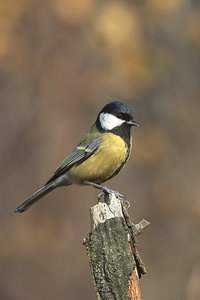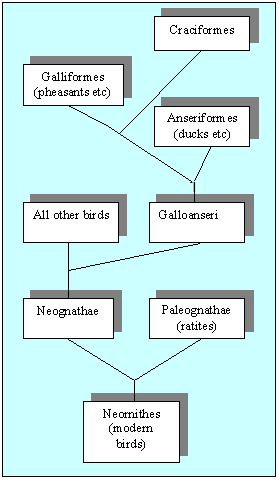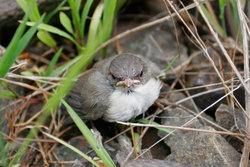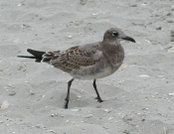|
Discover great deals on the many top brand items available only on eBay!
|
|
|
This site contains sponsored affiliate links.
Perches
Birds are bipedal, warm-blooded, egg-laying vertebrates characterized primarily by feathers, forelimbs modified as wings, and hollow bones. more...
 Home Home
 Birds Birds
 Bird Cage Stands Bird Cage Stands
 Bird Cages Bird Cages
 Bird Feed & Treats Bird Feed & Treats
 Bird Feeders & Seed Catchers Bird Feeders & Seed Catchers
 Bird Toys Bird Toys
 Incubators Incubators
 Other Bird Supplies Other Bird Supplies
 Perches Perches
 Cats Cats
 Dogs Dogs
 Ferrets Ferrets
 Fish Fish
 Guinea Pigs Guinea Pigs
 Horses Horses
 Other Animals Other Animals
 Rabbits Rabbits
 Reptiles Reptiles
 Rodents Rodents
 Sugar Gliders Sugar Gliders
 Tadpoles & Frogs Tadpoles & Frogs
 Turtles Turtles
Birds range in size from the tiny hummingbirds to the huge Ostrich and Emu. Depending on taxonomic viewpoint, there are about 8,800–10,200 living bird species (plus about 120–130 that have become extinct in the span of human history) in the world, making them the most diverse class of terrestrial vertebrates.
Birds are a very differentiated class, with some feeding on nectar, plants, seeds, insects, rodents, fish, carrion, or other birds. Most birds are diurnal, or active during the day. Some birds, such as the owls and nightjars, are nocturnal or crepuscular (active during twilight hours). Many birds migrate long distances to utilise optimum habitats (e.g., Arctic Tern) while others spend almost all their time at sea (e.g. the Wandering Albatross). Some, such as frigatebirds, stay aloft for days at a time, even sleeping on the wing.
Common characteristics of birds include a bony beak with no teeth, the laying of hard-shelled eggs, high metabolic rate, and a light but strong skeleton. Most birds are characterised by flight, though the ratites are flightless, and several other species, particularly on islands, have also lost this ability. Flightless birds include the penguins, ostrich, kiwi, and the extinct Dodo. Flightless species are vulnerable to extinction when humans or the mammals they introduce arrive in their habitat. The Great Auk, flightless rails, and the moa of New Zealand, for example, all became extinct due to human influence.
Birds are among the most extensively studied of all animal groups. Hundreds of academic journals and thousands of scientists are devoted to bird research, while amateur enthusiasts (called birdwatchers or, more commonly, birders) probably number in the millions.
High-level taxonomy
Birds form a class, whose scientific name is Aves. The founding species of class Aves probably lived in the Jurassic period.
According to the most recent consensus, Class Aves and a sister group, the family Crocodylidae, together form a group of unnamed rank, the Archosauria.
The class of birds separated early into two superorders, the Paleognathae (mostly flightless birds like ostriches), and the wildly diverse Neognathae, containing all other birds.
Bird orders
This is a list of the taxonomic orders in the class Aves. The list of birds gives a more detailed summary, including families.
- Struthioniformes, Ostrich, emus, kiwis, and allies
- Tinamiformes, tinamous
- Anseriformes, waterfowl
- Galliformes, fowl
- Sphenisciformes, penguins
- Gaviiformes, loons
- Podicipediformes, grebes
- Procellariiformes, albatrosses, petrels, and allies
- Pelecaniformes, pelicans and allies
- Ciconiiformes, storks and allies
- Phoenicopteriformes, flamingos
- Accipitriformes, eagles, hawks and allies
- Falconiformes, falcons
- Turniciformes, button-quail
- Gruiformes, cranes and allies
- Charadriiformes, plovers and allies
- Pteroclidiformes, sandgrouse
- Columbiformes, doves and pigeons
- Psittaciformes, parrots and allies
- Cuculiformes, cuckoos
- Strigiformes, owls
- Caprimulgiformes, nightjars and allies
- Apodiformes, swifts
- Trochiliformes, hummingbirds
- Coraciiformes, kingfishers
- Piciformes, woodpeckers and allies
- Trogoniformes, trogons
- Coliiformes, mousebirds
- Passeriformes, passerines
Note: This is the traditional classification (the so-called Clements order). A more recent, radically different classification based on molecular data has been developed (the so-called Sibley order) and is gaining acceptance.
Read more at Wikipedia.org
• [List your site here Free!]
|
|
|
|
 |
|
|
 |  |  | Perch Bird Cage Sand Stand Aviary Parrot Grinding Toy 9” Parakeet Conure $10.25 |  |
 | Large Manzanita Bird / Parrot Perches $20.00 to |  |
 |  |  | New ListingBird Perch 4 Pcs Natural Wood Stand Parakeet Toys Bird Cage Accessories $14.99 |  |
 | Bird Perch for Cage Bird Stand Toy Set Natural Wooden Parrot Stand Branch $12.46 |  |
 |  |  | 5 Bird Cage Perches Canary Parakeet Budgie Finch Plastic 8 Inches White $10.50 |  |
 | New ListingBird Swing Toys With Bells Hanging Parrot Hammock Moon Shaped Bird Perch Stand $11.19 to |  |
 |  |  | Polly's Beach Sands Bird Perch, Large $30.87 |  |
 | Heated Bird Perch Simulated Wood Stand Perches Bird Cage Warmer,Waterproof Therm $49.99 |  |
 |  |  | Sure-Grip Grooming Y-Perch Medium Bird Perch, Bird Beak and Nail Trimmer Perch $24.99 |  |
 | Bird Perch Natural Wood Stand Parakeet Toys Cage Accessories for Parrots 4 Pcs $14.62 |  |
 |  |  | Pet Comfy Perch For Birds Flexible Multi-color Rope, Small - 32" Length $10.34 |  |
 | Bird Playground Parrot Playstand Bird Perch Stand Gym Natural Wood Play Stand. $36.87 |  |
 |  |  | Polly's Pet Products Manu Mineral Bird Perch Size Large 9-inch Parrot Bird Perch $20.99 |  |
 | Birds Love Bottlebrush Thai Wood Bird Perches for Parakeets, Finches,. $20.34 |  |
 |  |  | Bird Rope Perch Parrot Toys Birds Bungee Rope Perch Climbing Swing Perches for P $12.95 |  |
 | 40Pcs Dove Rest Stand Frame Grill Dwelling Pigeon Perches Roost Bird Supplies $34.99 |  |
 |  |  | 3 Pcs Bird Training Stand Kit | Portable Tabletop Perch & Target Stick for Parro $33.40 |  |
 | Colorful Bird Rope Perch for Parrots Playing, Chewing or Preening (35", 2 Pack) $14.89 |  |
 |  |  | 12" Set Sanded Manzanita Bird / Parrot Perches, Set of 3 $21.00 to |  |
 | Pet Bird Acrylic Perch Rings Pegs Toy Fun Activity For Cage Medium To Large $4.97 |  |
 |  |  | Jw Pet Comfy Perch For Birds Flexible Multi-color Rope, Medium - 21" Length $10.53 |  |
 | Penn-Plax Bird-Life Calcium Bird Perch – Naturally Trims Nails & Beak – Ideal fo $21.99 |  |
 |  |  | Bird Playground Birdcage Playstand Pet Bird Perch Platform Stand Parrot Play $29.88 |  |
 | Flat Bird Perch Acrylic Toy Parrot Perches for Budgies Conures Parakeets $12.78 |  |
 |  |  | 8 Pieces Natural Wood Bird Perch Wooden Parrot Perch Stand Fork Toys Hanging Mul $19.84 |  |
 | 72" Parrot Perch Playstand Bird Play Stand Toy Hook Rolling Wheel Wrought Iron $83.55 |  |
 |  |  | PerchPal Bird Perch for Retrieving, Training, & Safe Handling of Pet Birds $27.95 |  |
 | Polly's Twister Bird Perch, Small $21.99 |  |
 |  |  | Grooming Perch: 1-3/4" x 12" Safe Grooming Perch, Bird Perch, Parrot Perch $14.99 |  |
 | Bird Perch Stand Natural Grape Wood Bird Cage Perch For Budgie, Finch, Parrot $14.87 |  |
 |  |  | 2Pcs 11.8’’Bird Rope Perches (Red Yellow and Green), Bendable Climbing Standing $14.70 |  |
 | Bird Rope Perches for Parrots, Cockatiels, Parakeets, Budgie Cages Comfy Birds C $13.56 |  |
 |  |  | Featherland Paradise | The Percher | Portable Training Bird Perch $22.99 |  |
 | Birdfy Pro Perch (Feeder) $30.00 |  |
 |  |  | Wood Perches for Pet Birds - Natural wood, dowel, cactus. U-Pick the 1 type $15.00 to |  |
 | Stainless Steel Perches Birds Stand Rest V Shape For Pigeons and Birds $10.99 |  |
 |  |  | Parrot Perch Rough-Surfaced - Quartz Sands Bird Cage Perches for Medium to Large $21.80 |  |
 | New ListingMogoko 4 Pcs Bird Perches Parrot Stand Natural Wood Perch Parakeet Toys Bird Cag $18.75 |  |
 |  |  | New ListingAssorted Bird Perches $27.99 |  |
 | Perches 2 Plastic Toys Bird Cage Aviary Parakeet Multi Branch 10 " Black $10.50 |  |
 |  |  | Huge Wood Red Parrot Hanging Perch Carving Painting Head Art African Tropical $64.94 |  |
 | Mineral Perch for Birds Pet Perches Conures Parrot Toy Nail Wooden $6.95 |  |
 |  |  | 48" Bird Parrot Play Stand Cockatoo Gym Perch Metal Pet Feeder w/ Bowls Wheels $64.99 |  |
 | 20 X2.5cm Stainless Steel Bird Perches Parrot Claw Grind Stick $15.02 |  |
 |  |  | Manzanita Perches Four Pack 16" Long Bird Perch All Living Things $37.04 |  |
 | Dove Rest Stand Frame Grill Dwelling Pigeon Perches Roost Bird Supplies 20/30/40 $12.99 to |  |
 |  |  | Bird Life Multicolored and Flexible Rope Perch – Create Fun, Colorful Curves and $10.59 |  |
 | Vintage Ceramic Parrot Figurine Bird Sitting on Perch Made in Brazil 6 Inch $18.00 |  |
 |  |  | Parrot Scale - Parrot Wizard Nu Perch Parrot Training Scale for Weighing Birds $159.99 |  |
 | Polly's Full Length Extra Small Bird’s Hardwood Bird Perch, 9 Inch Open Box. A8 $9.95 |  |
 |  |  | 2 Pcs Parrot Perches for Large Birds Fun Toy Supplies $33.01 |  |
 | Coziwow Parrot Wood Perch Playstand Bird Stand W/Stainless Steel Rolling Wheel $64.99 |  |
 |  |  | Heated Thermo Bird Perch for Large Birds 14 Inch Euc As Shown $34.72 |  |
 | K&H Thermo Heated Bird Perch Large Kh9012 14.5" x 2" x 2" $46.95 |  |
 |  |  | Perch 5 Bird Cage Perches Canary Parakeet Budgie Finch Plastic 8 Inches $9.97 |  |
 | Grape Wood Bird Perch Parrot Perches Natural Birds Stand Grape Stick Toy $14.53 to |  |
 |  |  | Pinecone Bird Perch Stand Bird Cage Perch Toy For Budgie, Finch, Parrot $8.18 |  |
 | Perchsicle™ Bird perch $14.99 |  |
 |
| Click to see more Perches items at www.ebay.com
Prices current as of last update, 12/17/24 5:27pm.
| |
|
 |
|
|





